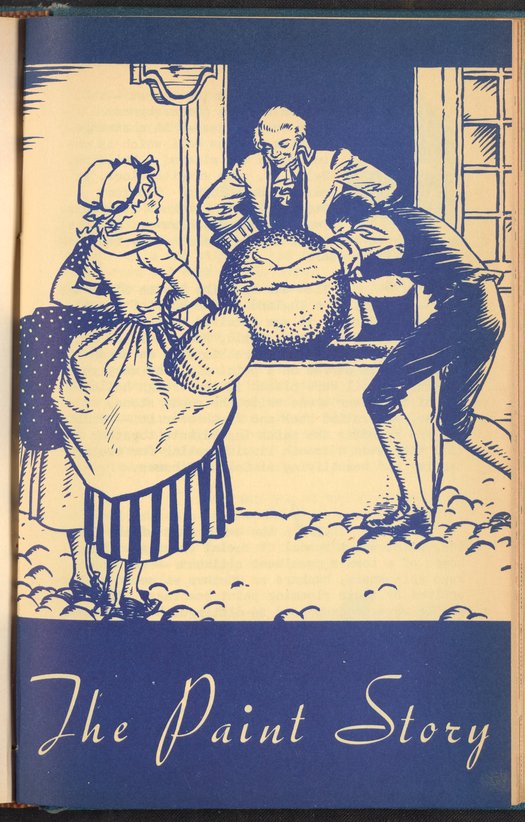The Paint Story
- 1940s

Booklet corresponding to a radio broadcast program created by the National Paint, Varnish, and Lacquer Association. The booklet begins by discussing the history and use of paint and color during the colonial period of the United States. Describes paint-making practices, then, lists sources of paint products such as the animal kingdom or mineral kingdom. For example, beeswax from bees, or chalk from the Chalk Cliffs of Dover. Finally, describes how modern construction is made possible by the protection of paint and varnish products. Includes small stylized illustrations throughout and decorated covers.
The National Paint, Oil and Varnish Association, Inc. was formed in 1933 and was the national professional association representing all branches of the paint, oil, and varnish industries.
| Property | Value |
|---|---|
| Creator of work | |
| Place of publication | |
| Format | |
| Genre | |
| Extent |
|
| Language | |
| Subject | |
| Rights | Public Domain Mark 1.0 |
| Credit line |
|
| Department | |
|---|---|
| Physical container |
|
National Paint, Varnish. “The Paint Story.” Pamphlets Corresponding to Radio Shows Produced by the National Paint, Varnish and Lacquer Association. Washington (D.C.), 1940–1949. TP935 .K46. Science History Institute. Philadelphia. https://digital.sciencehistory.org/works/4atk9nu.
This citation is automatically generated and may contain errors.
| Previous image | shift + or , |
| Next image | shift + or . |
| Pan image | |
| Zoom in | + or shift + |
| Zoom out | - or shift + |
| Zoom to fit | 0 |
| Close viewer | esc |
|
Also Mouse click to zoom in; shift-click to zoom out. Drag to pan. Pinch to zoom on touch. |
|
The Science History Institute recognizes there are materials in our collections that may be offensive or harmful, containing racist, sexist, Eurocentric, ableist, or homophobic language or depictions. The history of science is not exempt from beliefs or practices harmful to traditionally marginalized groups. The Institute is engaged in ongoing efforts to responsibly present and address the evidence of oppression and injustice inextricable from the history of science. If you would like to learn more about our ongoing efforts or if you encounter harmful, inaccurate, or insufficient descriptions, please contact us at digital@sciencehistory.org.






